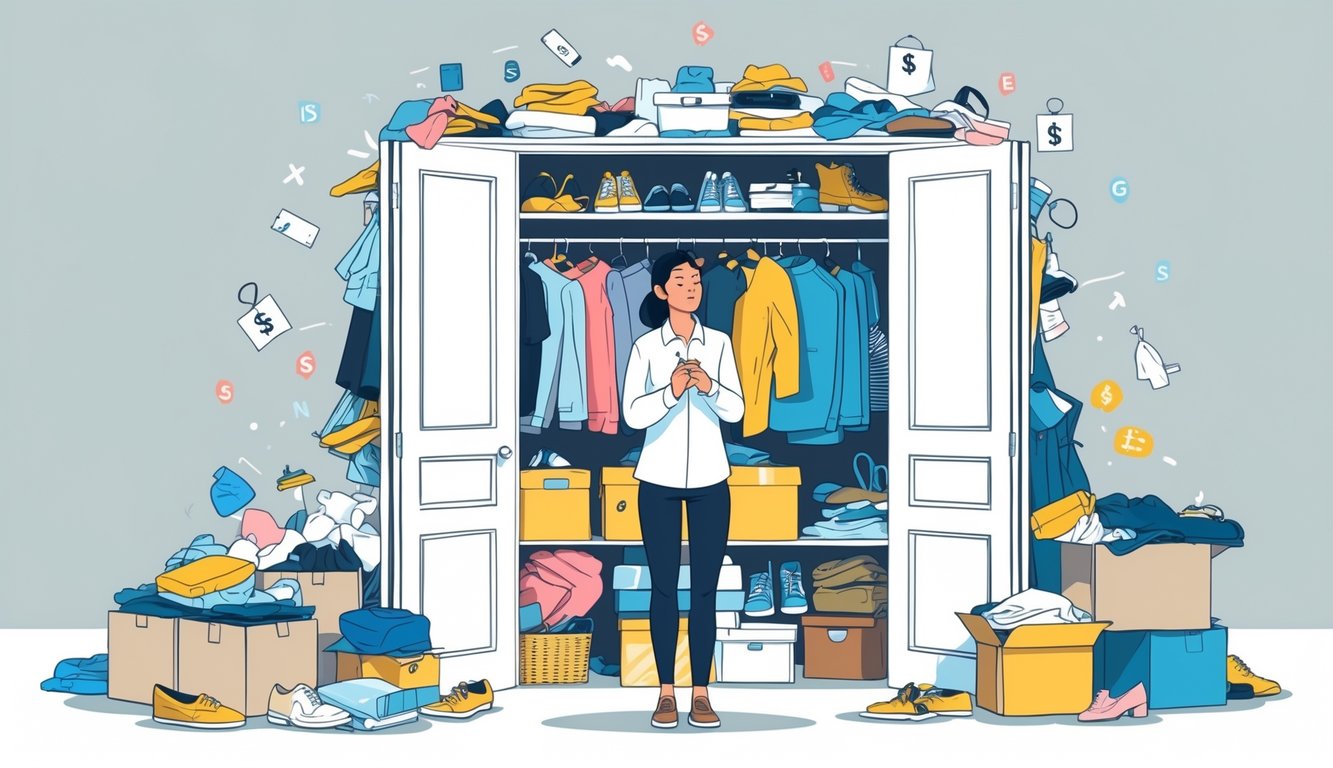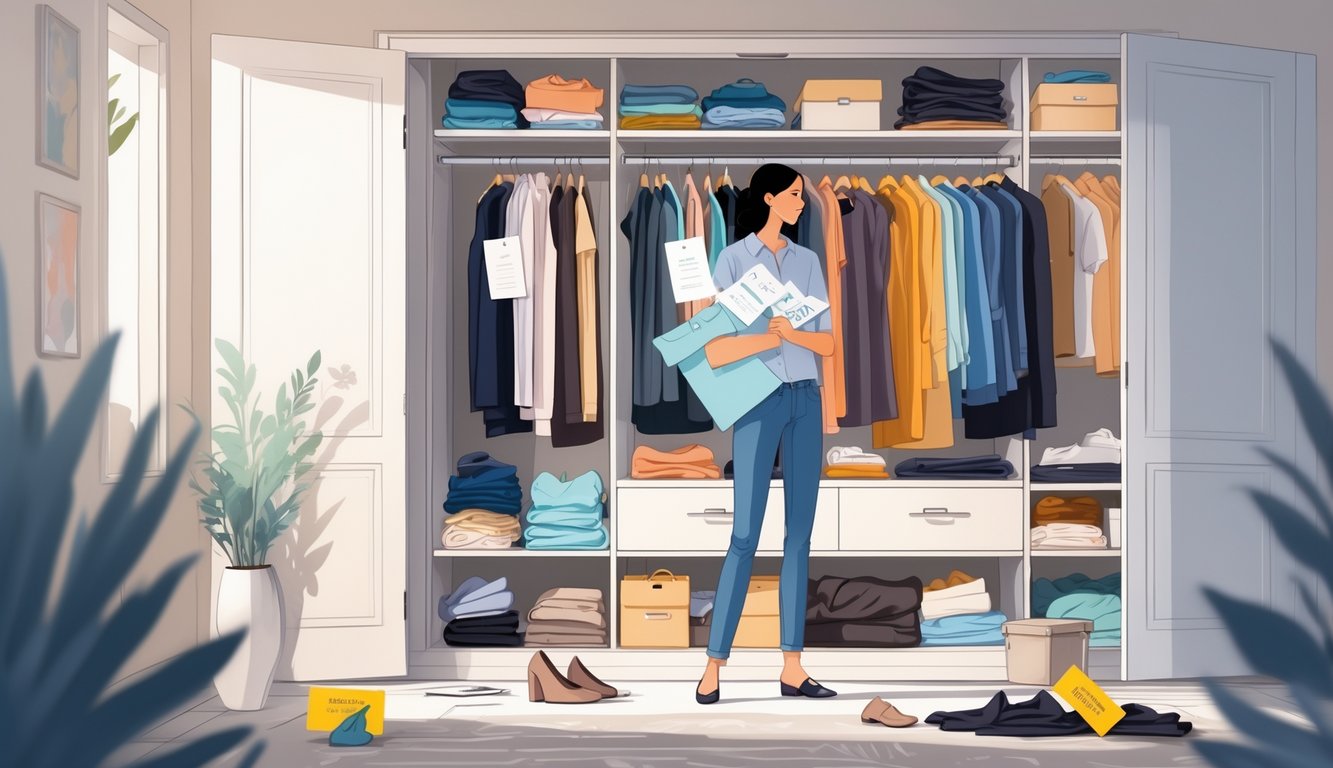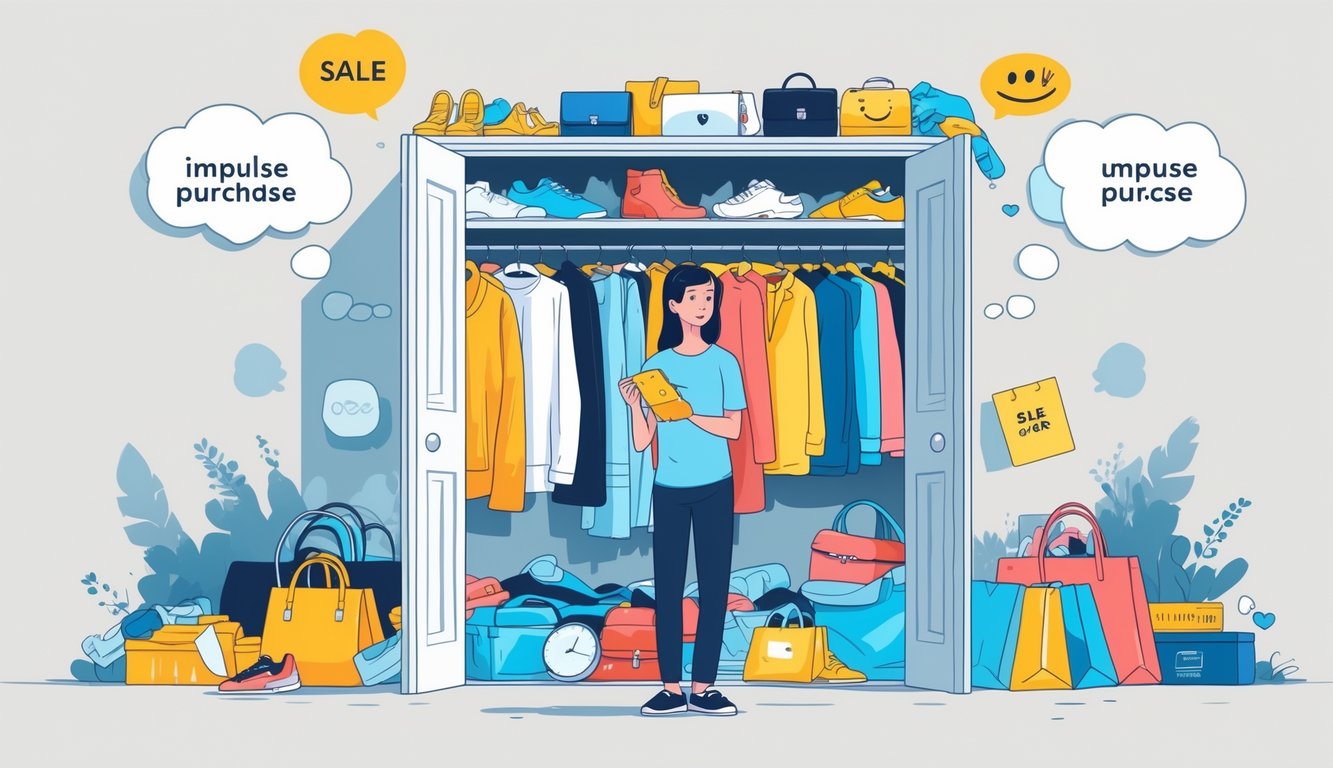
The Link Between Clutter and Well-Being
It’s so weird how a pile of junk in the corner can make me tired for no reason. Clutter’s not just ugly—it’s like a mental tax. Psychology Today says visual chaos ramps up stress and basically drowns out my ability to focus on, like, boiling water. American Psychological Association—yep, they did studies—says chronic clutter means higher cortisol. So my mess is literally stressing me out.
I found “decision fatigue” while doomscrolling at 2 a.m.—that urge to just avoid the mess, not reply to emails, not pick out socks. Motivational memes don’t mention the daily energy drain of ignoring chaos. That’s the self-care tax nobody talks about. Some days, just opening my closet feels like failing a test I never studied for.
How Closet Cleanouts Boost Self-Esteem
When I finally dumped the novelty tees, the scarf I thought I’d need in Paris (never been), and those weird sale jeans, it wasn’t about being “minimalist.” Honestly, I felt kind of awful at first. Then suddenly—less guilt, less regret, maybe even a little smugness seeing all that open space for the first time in years. The Good Trade says decluttering is self-care, but it’s not that simple. Sorting colors, folding sweaters—each tiny step was this weird confidence boost.
Finishing a closet purge means I sleep better and pick outfits faster. Not because I “found minimalism,” but because order where there was chaos makes me trust my decisions just a bit more. Actual progress, like wearing everything on one shelf, feels way better than some Pinterest-perfect photo. I use a checklist app (Habitica—no sponsorship, just obsessed).
Minimalism and Personal Growth
Influencers act like minimalism is a magic fix. It’s not. Nobody warns you about the weird emptiness after realizing you bought eight nearly identical winter coats. Minimalism isn’t tossing everything until you’ve got four outfits and a mug. When I stripped my closet down, I noticed which pieces I actually wear and why the rest just sit there. Priorities shifted—not always toward less, just toward better.
Sometimes I stash sentimental clutter in storage instead of tossing it, which, believe it or not, helps with decluttering. So, ignore anyone who says there’s a “right” way to be a minimalist. Honestly, getting rid of stuff is a skill, and sometimes it’s just funny how bad I am at it. It’s about clawing back some control, little by little—even if I keep one ridiculous sequined jacket for nostalgia. That irrational choice? Kind of part of growing up.
How Impulse Buying Impacts Personal Style

What drives me nuts: I open my closet and some neon shirt I bought four years ago nearly blinds me. It’s not just wasted space. It’s like a secret code—who I thought I was versus what I’ll actually wear, always clashing. Even big fashion houses don’t do 25 aesthetics a season, but my closet? Apparently, it’s possible, thanks to endless impulse buys.
The Challenge of Defining Your Signature Look
I had to check—Harvard Business Review says most people use maybe 20% of their closet. Some bargain-rack tunic or “must-have” accessory just sits there, judging me. The worst? Stuff I bought because of a sale countdown timer or some influencer yelling “you need this.” Stats say impulse buys are up to 80% of purchases. That’s not even surprising.
So, how do you even find a personal style when half your closet is impulse buys? It’s just a flood—plaid, sequins, ten “maybe for an event” pieces, zero actual favorites. The more I shop without thinking, the more my “style” just becomes whatever was cheap that week. I’m not alone—retail pros at The Vivienne Files call it the “Winchester Mystery Closet.” That’s exactly it. A patchwork of random stuff, nothing works together, picking an outfit is like spinning a wheel.
Building a Wardrobe That Reflects the Real You
Supposedly, capsule wardrobes are the answer—minimal, practical, kind of boring, honestly, unless you can actually get rid of 47 graphic tees. My best friend, who’s a stylist, says pick three “core colors.” Meanwhile, my closet is a graveyard of impulse buys with tags still on. My style’s buried under $9 clearance cardigans, and even my “laundry day” options aren’t things I love.
Impulse buying just buries any real sense of style. Every “maybe I’ll wear this” piles on more noise, hiding what I actually like. Forbes points out impulse buys lead to regret. It’s not just annoying—it’s expensive and kind of exhausting. A closet full of afterthoughts just means I’m expressing indecision, not personality. Sometimes buying something new feels like progress, but really, it’s just more confusion.
What sometimes works: I force myself to ask, “Does this even go with three things I own?” before buying. Not that I always listen—see: the neon scarf I wore once for Halloween. If you’ve actually managed to build a wardrobe that feels like you, not just a pile of random trends, I’m jealous and honestly skeptical. For most of us, impulse buys win until we start pulling back the chaos.
Psychological Traps: Triggers Behind Unplanned Purchases

Let’s not pretend—my closet’s mess is more about psychological sucker punches than actual need. These impulse triggers are engineered, ruthless, everywhere. Even the color of that discounted jacket I’ll never wear is a trap. They count on me zoning out in checkout lines and panicking about fake deadlines.
Fear of Missing Out (FOMO) and Social Influence
I scrolled past neon sneakers on sale at 3 a.m.—didn’t even remember adding them to my cart, but there they were. That’s FOMO, right? It’s not just an abbreviation; it’s a retail landmine. Impulse buying psychology says emotional urgency—not logic—makes me click “buy.” Everyone flashing new trends on social, “limited stock” banners, timed sales—it’s like chasing a parade I never signed up for.
A behaviorist told me 60% of my unplanned buys (looking at you, sequined tops) come from peer pressure. Checks out. My sister got boots because they “went viral,” and somehow that pressure still seeps into my brain, even though I tell myself trend-chasing is over. Social triggers aren’t subtle. My brain’s reward center lights up long before logic even shows up, and “exclusive drops” just make it worse.
Visual Cues and Pricing Strategies Retailers Use
What really gets me: those bins by the register, the bold fonts, red “sale” stickers—retailers aren’t subtle, but it still works. If I’m grabbing another basic tee for $7.99, it’s not genius; it’s manipulation. Stores use bright lights, folded piles, “last item” tags (never actually the last), all to hijack my gut reactions. Here’s how they do it: layouts, pricing, color, all designed to mess with me.
My dumbest buy? A discounted hat because it was at eye-level, plus a “two for one” deal—like, who wears two hats? Science calls it “loss aversion.” I call it, why am I holding a neon belt right now?



